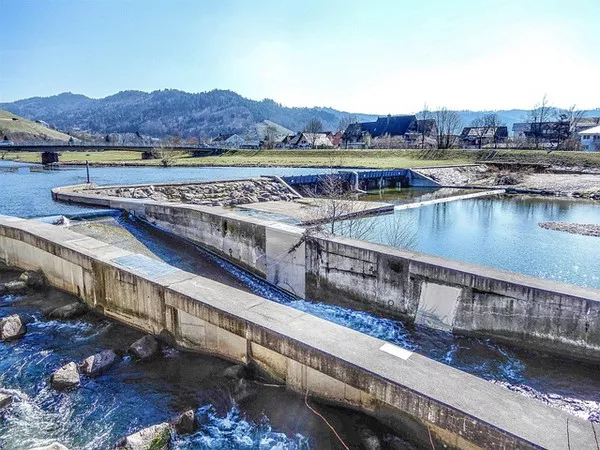Sewage treatment is a vital process that ensures the safe and effective removal of contaminants from wastewater before it is discharged into the environment. This process involves various stages designed to eliminate pollutants and protect public health and the environment. In this article, we will explore the four primary stages of sewage treatment and their significance in maintaining water quality and ecological balance.
Preliminary Treatment
The preliminary treatment stage is the first step in sewage treatment and involves the removal of large objects and debris from wastewater. Wastewater passes through screens or grates to capture items such as branches, rags, plastics, and other solid materials. The removal of these larger particles protects downstream equipment from damage and prevents clogging in subsequent treatment processes.
After screening, the wastewater enters a grit chamber where smaller, dense particles like sand, gravel, and coffee grounds settle to the bottom due to their weight. These settled particles, known as grit, are then removed through a scraping mechanism or by using air or water jets. Preliminary treatment helps protect pumps, pipes, and other equipment from abrasion and ensures the smooth functioning of subsequent treatment stages.
Primary Treatment
Following preliminary treatment, the wastewater enters the primary treatment stage, also known as sedimentation or clarification. This stage aims to remove suspended solids and heavy organic matter from the wastewater.
In primary treatment, the wastewater flows into large settling tanks called sedimentation basins or primary clarifiers. The velocity of the wastewater is reduced, allowing solid particles to settle to the bottom under the force of gravity. This settlement process forms a layer of sludge, while lighter materials, known as scum, float to the surface.
The collected sludge is periodically removed from the bottom of the clarifiers and sent to further treatment processes, such as anaerobic digestion or dewatering. The scum is typically skimmed off the surface. Primary treatment significantly reduces the concentration of suspended solids and organic matter in the wastewater, preparing it for further purification in the subsequent stages.
Secondary Treatment
Secondary treatment focuses on the biological breakdown of organic matter and the removal of dissolved pollutants from the wastewater. This stage utilizes microorganisms to degrade organic material and transform it into a more stable form.
The most common secondary treatment method is activated sludge treatment. In this process, the wastewater is mixed with a culture of microorganisms in aeration tanks. The microorganisms, known as activated sludge, consume organic matter as their food source. Oxygen is supplied to the aeration tanks through diffusers or mechanical aerators to maintain aerobic conditions, promoting the growth and activity of the microorganisms.
As the wastewater and activated sludge mix together, the microorganisms break down organic pollutants, converting them into carbon dioxide, water, and additional microbial cells. The treated wastewater then flows into secondary clarifiers, where the remaining activated sludge settles to the bottom. A portion of this settled sludge is returned to the aeration tanks to maintain an adequate population of microorganisms, while the excess sludge is sent for further treatment or disposal.
Tertiary Treatment
Tertiary treatment, also known as advanced or final treatment, is the last stage of sewage treatment. Its purpose is to further improve water quality by removing specific contaminants that may still be present after primary and secondary treatment.
Tertiary treatment employs advanced processes to address specific concerns, such as the removal of nutrients (nitrogen and phosphorus), pathogens, trace organic compounds, and other pollutants. Common techniques used in tertiary treatment include:
Filtration: The wastewater passes through various filtration media, such as sand, activated carbon, or membranes, to remove fine suspended particles and residual contaminants.
Disinfection: Chemical disinfectants (e.g., chlorine, ozone, or ultraviolet light) are applied to kill or inactivate remaining pathogens, ensuring the water is safe for discharge or reuse.
Nutrient Removal: Additional treatment processes, such as biological nutrient removal or chemical precipitation, may be employed to reduce the concentration of nitrogen and phosphorus in the wastewater.
Tertiary treatment ensures the water meets stringent regulatory standards and can be safely discharged into receiving bodies of water or reused for irrigation, industrial processes, or other purposes, depending on local regulations and needs.
Conclusion
Sewage treatment is a multi-stage process that plays a crucial role in safeguarding public health and protecting the environment. The four stages of sewage treatment—preliminary treatment, primary treatment, secondary treatment, and tertiary treatment—work in tandem to remove contaminants, reduce pollution, and produce treated water that meets stringent quality standards.
By understanding these stages and the processes involved, we can appreciate the complexity and importance of sewage treatment in maintaining water quality and preserving our ecosystems. Continued advancements in technology and increased emphasis on sustainable practices will further enhance the efficiency and effectiveness of sewage treatment processes, ensuring a cleaner and healthier future for all.

